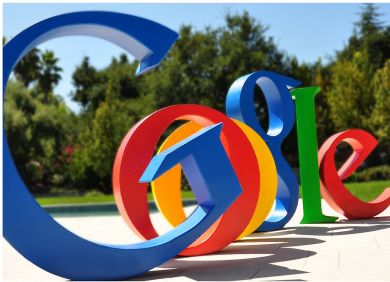Search engine giant Google has launched its Physical Web, which is a common web standard for smart devices in the growing Internet of Things (IoT) environment.
The idea is that the standard opens up the interaction between devices and computers in the future, without the need for proprietary apps or software. Google cites the example of a person walking up to any publicly connected smart device – a smartphone, vending machine, a poster, a toy, a bus stop – and not have to download an app first.
Broadcast URLs
So the Chrome-sponsored Physical Web project aims to do away with the need for proprietary apps and software in order for users to interact with devices.
“The Physical Web is, at its base, a discovery service where URLs are broadcast and any nearby device can receive them,” said Google. “This takes the web we know and love and unlocks exciting new ways to interact.”
 Google is putting the URL at the heart of its approach, and it hopes to create an open ecosystem where smart devices can broadcast URLs into the area around them. These URL will provide a gateway to ‘a web page with a small paragraph of info; a fully interactive web page; and a deep link into a native application.’
Google is putting the URL at the heart of its approach, and it hopes to create an open ecosystem where smart devices can broadcast URLs into the area around them. These URL will provide a gateway to ‘a web page with a small paragraph of info; a fully interactive web page; and a deep link into a native application.’
Google selected URLs for its approach because they are a known part of the web, very flexible, and most importantly, decentralised. “URLs allow anyone to play and no central server to be the bottleneck,” it said.
At the moment, it has an open source Android and iOS app that can detect broadcasted URLs, to demonstrate the concept. The app essentially tracks the broadcasted URLs and present them to the user, for him or her to begin interacting with the device concerned.
The broadcast URLs use Bluetooth Low Energy (BLE), because it is commonly found on many of today’s smartphones and tablets. But Google says other wireless technologies could be used in future, but for the moment BLE is the most convenient.
Google insists that the broadcast URLs can be secure and private, because there are many ways to safeguard URLs thanks to their flexibility, including the use of login pages etc.
IoT Confusion
By publishing the Physical Web specifications early, Google hopes to encourage others to get involved. But the search engine is likely to have its hands full, as there already is a growing number of IoT standards and technologies.
Indeed, Google already has its open Nest API, and in July its Nest division formed the Thread Group to create a single set of IoT standards. Its members already include Samsung, ARM, Freescale Semiconductor, Silicon Labs and several smaller companies.
Earlier this week, ARM released of a free operating system and software platform for IoT for devices running its ARM chips.
And likewise there are a growing number of standard bodies. Last month, Sony became the latest technology giant to join an IoT consortium, after it signed up to the AllSeen Alliance.
And in July some leading tech giants created the ‘Open Interconnect Consortium‘ (OIC) to push IoT standards. OIC members include Dell, Intel, Samsung, Broadcom, Atmel and Wind River.
And finally, lets not forget Apple with its HomeKit API.
All of these move comes despite concern that the deployment of IoT could be held back by too many competing standards.
Connect up with our Internet of Things Quiz!





